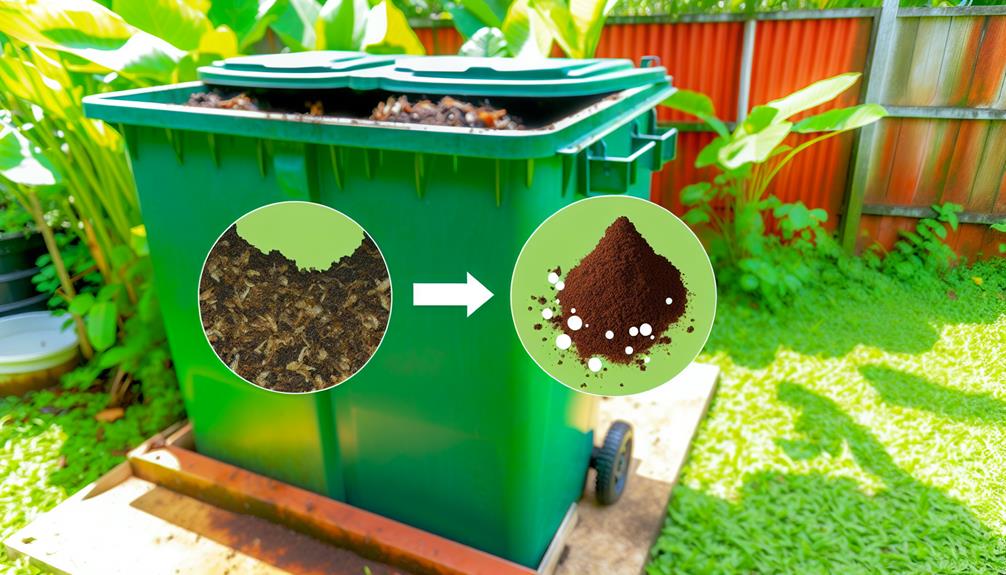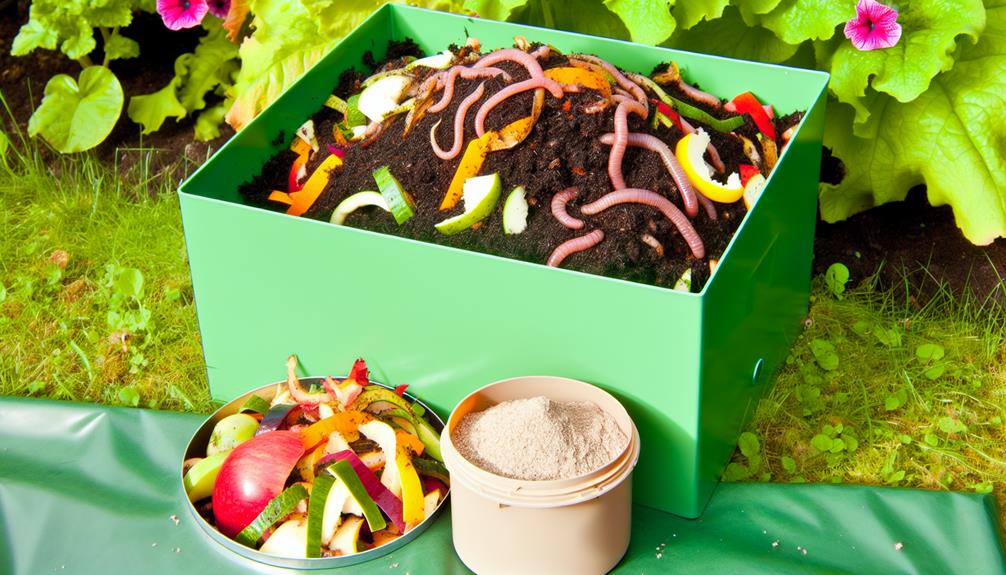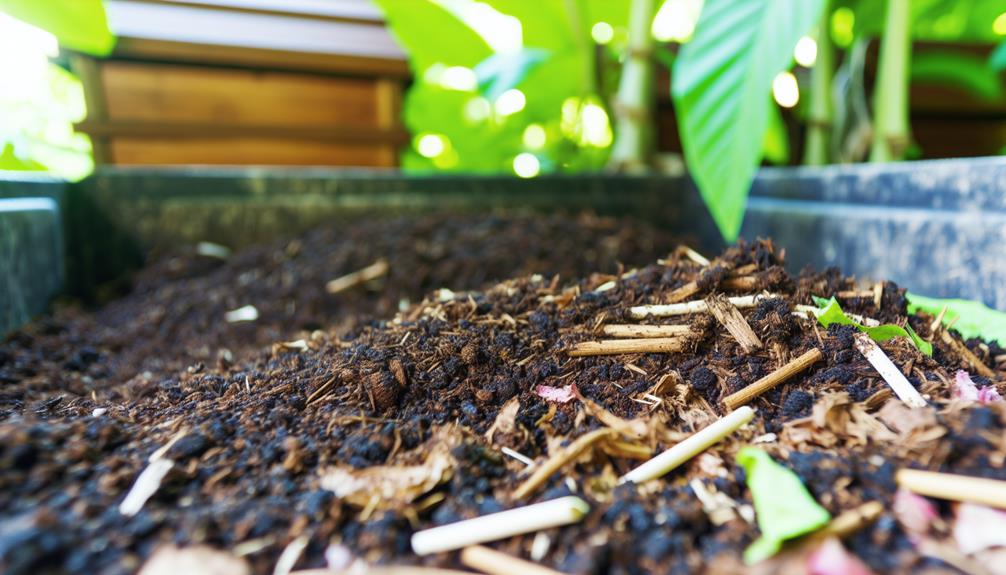

Yeast emerges as a powerful microbial catalyst in the dynamic world of composting, transforming organic waste management with its remarkable metabolic capabilities. This microscopic organism acts as a natural compost accelerator, rapidly breaking down complex organic materials and supercharging decomposition processes.
By introducing yeast into compost piles, gardeners and environmentalists can significantly enhance nutrient cycling, speed up organic matter transformation, and create rich, fertile soil amendments with unprecedented efficiency.
Yeast is a fascinating single-celled microorganism belonging to the Fungi kingdom, renowned for its remarkable versatility and significant role in various biological and industrial processes. These microscopic organisms are found in diverse environments and play crucial roles in fermentation, food production, and scientific research.
Yeast is a unicellular eukaryotic fungus with several key characteristics:
The world of yeast is incredibly diverse, with thousands of species exhibiting unique characteristics and capabilities. Different yeast types have evolved to thrive in specific environments, each possessing distinct metabolic properties and potential applications.
Yeast cells are complex microorganisms with intricate internal structures that enable their survival and reproduction. Their cellular architecture is a marvel of biological engineering, featuring specialized compartments that perform specific functions essential for cellular metabolism, energy production, and genetic information processing.
The cellular structure of yeast includes membrane-bound organelles that work in harmony to maintain cellular functions. Each component plays a critical role in the organism’s survival, from the nucleus storing genetic information to mitochondria generating cellular energy through metabolic processes.
Reproduction is a fundamental aspect of yeast biology, showcasing their remarkable ability to proliferate and adapt. Yeasts have evolved sophisticated mechanisms for generating new cells, ensuring their survival and genetic diversity through both asexual and sexual reproductive strategies.
These microorganisms can rapidly multiply under favorable conditions, with budding being the most common method of asexual reproduction. Sexual reproduction occurs less frequently but provides genetic variation that enhances the species’ adaptability to changing environmental conditions.
Yeasts primarily reproduce through two methods:
Also Read: Can You Compost Blood?
Composting is an environmentally friendly practice that transforms organic waste into nutrient-rich soil amendment. Adding yeast to your compost pile can be a strategic way to accelerate decomposition and enhance the nutrient profile of your compost.

Exploring how and when to incorporate yeast can help gardeners and composting enthusiasts optimize their organic waste recycling process.
| Aspect | Role of Yeast | Benefit |
|---|---|---|
| Enzyme Production | Breaks down complex materials | Faster nutrient release |
| Reproduction | Rapid population growth | Enhances microbial diversity |
| Organic Matter | Decomposes efficiently | Reduces composting time |
Incorporating yeast into your compost is simple. You can add leftover yeast from baking or brewing directly into your compost pile. Make sure the compost yeast remains moist and well-aerated to facilitate yeast activity. Additionally, mixing in nitrogen-rich materials like kitchen scraps and coffee grounds helps maintain a balanced compost.
Don’t forget to monitor the temperature. Yeast thrives in warm conditions, so turning your compost regularly will help maintain an ideal environment. By understanding and utilizing yeast enzymes and yeast reproduction, you’ll create a more efficient composting system, contributing to a thriving garden ecosystem.
Composting yeast is an innovative and sustainable approach to waste management that transforms organic materials into valuable nutrients. By incorporating yeast into compost piles, gardeners and environmentalists can enhance soil health, reduce waste, and support ecological balance.
| Category | Specific Benefit | Detailed Description |
|---|---|---|
| Nutrient Contribution | Nitrogen Enrichment | Provides high-quality nitrogen for accelerated organic matter decomposition |
| Microbial Activity | Compost Activation | Introduces beneficial microorganisms that speed up breakdown processes |
| Soil Health | Organic Matter Enhancement | Improves soil structure, water retention, and nutrient availability |
| Environmental Impact | Waste Reduction | Decreases landfill methane emissions and promotes circular waste management |
| Agricultural Value | Natural Fertilizer | Reduces dependency on chemical fertilizers |
| Decomposition | Enzyme Production | Generates enzymes that break down complex organic compounds |
| Cost-Effectiveness | Low-Cost Amendment | Inexpensive and readily available compost additive |
| Sustainability | Organic Recycling | Transforms potential waste into valuable soil nutrition |
Also Read: Can You Compost Black-Eyed Peas?
Composting with yeast, while beneficial, is not without challenges. These potential limitations is crucial for successful organic waste management. Every composting method requires careful consideration and balanced approach. Yeast introduces complex microbial interactions that can potentially disrupt the delicate ecosystem of a compost pile if not managed strategically.
While composting yeast offers numerous benefits, there are several potential drawbacks to consider when adding yeast to your compost pile:
| Drawback | Description | Mitigation Strategy |
|---|---|---|
| Excessive Acidity | Yeast fermentation can lower the compost pile’s pH, potentially creating an overly acidic environment. | Maintain a balanced carbon-to-nitrogen ratio and add alkaline materials. |
| Rapid Decomposition | Can accelerate breakdown too quickly, potentially destabilizing the compost ecosystem. | Add yeast in moderation and balance with other organic materials. |
| Moisture Imbalance | May contribute to excess moisture if not properly managed. | Ensure proper aeration and maintain a sponge-like moisture level. |
| Potential Odor Issues | Overuse of yeast can lead to unpleasant smells. | Add yeast sparingly and mix thoroughly with other compost materials. |
| Pest Attraction | Improperly managed yeast additions might attract unwanted pests. | Bury yeast deep in the compost pile and maintain proper balance. |
Key Considerations – While these drawbacks exist, they can be effectively managed by:
The key is moderation and careful management. Most composters find that when added in small amounts, yeast is more beneficial than problematic.
Also Read: Can You Compost Celery?
Disposing of yeast solutions requires careful consideration to prevent potential environmental and waste management issues. Yeast, being a living microorganism, can continue to ferment and grow under certain conditions, which might cause unexpected complications in waste disposal.

The proper methods to neutralize and dispose of yeast solutions is crucial for home bakers, brewers, and food production professionals.
Heat effectively neutralizes yeast activity by destroying cellular structures and preventing further fermentation. By applying high temperatures, you can rapidly deactivate microorganisms, rendering the solution biologically inactive.
This method is particularly useful in laboratory settings and commercial food production environments where precise microbial control is essential for maintaining hygiene and preventing unintended fermentation processes.
Chemical neutralization provides an alternative approach to deactivating yeast solutions by altering their biochemical environment. Substances like baking soda, salt, and mild acids can interrupt yeast metabolism and prevent further growth.
This method is particularly useful when thermal treatment is impractical or when dealing with smaller quantities of yeast solution that require quick, efficient neutralization.
The quantity of yeast solution significantly influences disposal strategies. Small amounts can typically be managed through standard waste streams, while larger volumes demand more specialized handling.
The appropriate disposal method based on volume helps prevent potential environmental contamination and ensures compliance with local waste management regulations and guidelines.
Environmentally conscious disposal of yeast solutions involves strategic approaches that minimize ecological impact. Composting, garden application, and controlled waste management techniques can transform potential waste into beneficial organic material.
By selecting appropriate disposal methods, individuals can contribute to sustainable waste reduction and support local ecosystem health.
Pro Tip: When disposing of yeast solutions, always aim to deactivate the microorganisms to prevent unexpected fermentation or growth in waste containers.
Also Read: Can You Compost Basil?
Gardeners often wonder about alternative uses for expired yeast, and it turns out that this common kitchen ingredient can be surprisingly beneficial for plant growth. Instead of discarding old yeast, you can repurpose it as a natural fertilizer that provides nutrients and potentially supports plant health.
The process is simple, eco-friendly, and can help reduce waste while giving your plants a nutritional boost.
Yeast is a living microorganism packed with essential nutrients that can transform your garden’s soil composition. By converting expired yeast into a liquid fertilizer, you’re essentially creating a nutrient-rich solution that can stimulate plant growth and improve soil microbial activity.
The simple preparation process involves dissolving yeast in water, allowing it to activate, and then applying it to your garden plants as a natural, cost-effective fertilization method.
Ingredients:
Unfermented Fertilizer Method:
Yeast-based fertilizers are more than just a simple nutrient source; they’re a comprehensive plant growth enhancer. The microorganisms in yeast help break down organic matter, improve soil structure, and create a healthier environment for root development.
By introducing beneficial bacteria and providing essential nutrients like nitrogen, yeast fertilizer can boost plant immunity, accelerate growth, and potentially increase overall crop yield.
Yeast-based fertilizers offer several advantages for gardening:
Proper application of yeast fertilizer is crucial for maximizing its benefits. Different plants have varying nutrient requirements, so understanding the right timing and frequency is essential.
By strategically applying yeast fertilizer during key growth stages, you can help plants establish strong root systems, enhance flowering, and improve fruit production. Always monitor your plants’ response and adjust the application accordingly.
While yeast fertilizer offers numerous benefits, it’s not a complete standalone solution for plant nutrition. Understanding its limitations and complementing it with other fertilization methods is key to successful gardening. Consider soil testing, crop rotation, and supplementing with additional organic or chemical fertilizers to ensure a balanced nutrient profile for your plants.
While yeast fertilizer can be helpful, it’s not a complete fertilizer solution. The NPK (Nitrogen-Phosphorus-Potassium) ratio is relatively low, so you may need to supplement with additional nutrients. The primary benefit is the nitrogen content and potential microbial support for plant growth.
Pro Tip: If your yeast has expired and won’t proof for baking, it can still be an excellent addition to your garden or compost pile.
Yes, yeast can attract pests to your compost pile. For pest prevention, always use compost covering. It helps create a welcoming environment for beneficial microbes while keeping unwanted critters away. Your garden community will thank you!
You’re wondering about composting expired yeast, right? It’s totally safe! Expired yeast boosts nutrient content and offers microbial benefits, enhancing your compost’s health. You’ll be contributing to a richer, more vibrant garden community. Go for it!
When considering the decomposition time, yeast breakdown in compost typically takes a few weeks. You’ll see it integrate smoothly into your compost pile, contributing to a richer, more nutrient-dense soil for your community garden.
Expired yeast can often be used if it passes a simple test: dissolve in warm water with sugar. If it bubbles within 10 minutes, the yeast is still active and safe to use.
When composting yeast, you might notice pH fluctuations. Yeast nutrients can temporarily alter the balance, but it’s usually minor. Regularly monitor your compost, and you’ll easily maintain a healthy environment for your community of decomposers.
It appears that yeast serves as a remarkable compost accelerator, significantly enhancing decomposition processes. By introducing yeast to compost piles, gardeners can effectively stimulate microbial activity, speed up organic matter breakdown, and create nutrient-rich soil amendments.
The strategic use of yeast in composting demonstrates an innovative, cost-effective method for improving soil health and reducing waste decomposition time, ultimately supporting sustainable gardening practices and environmental conservation efforts.
